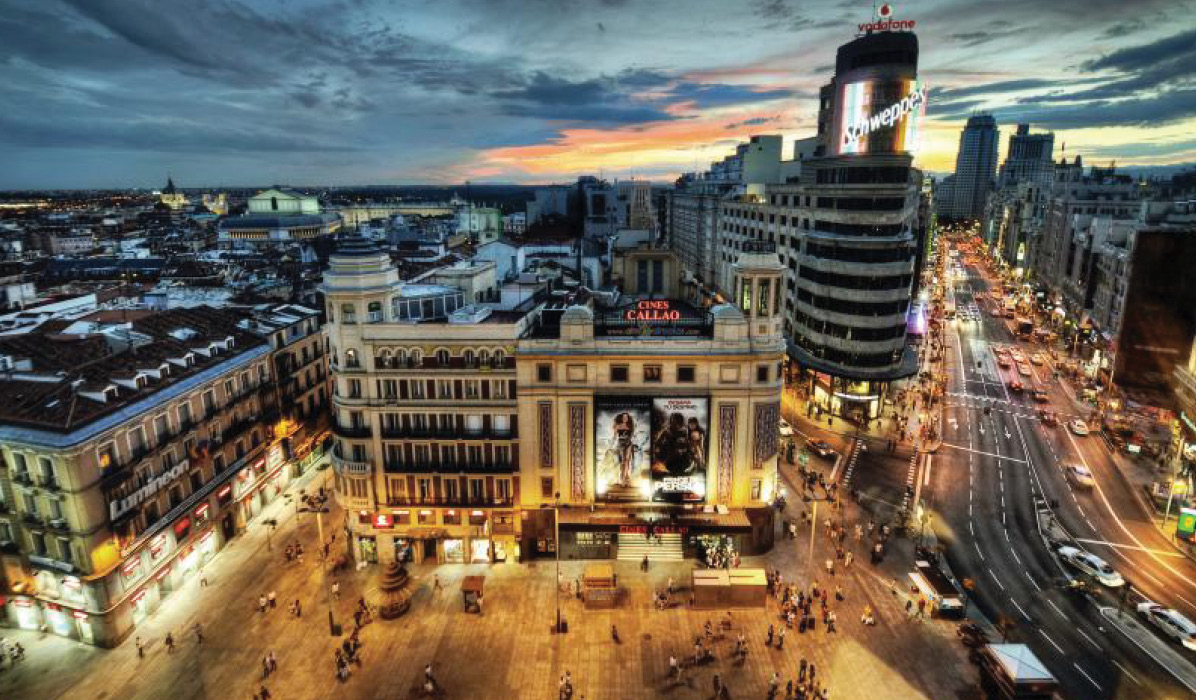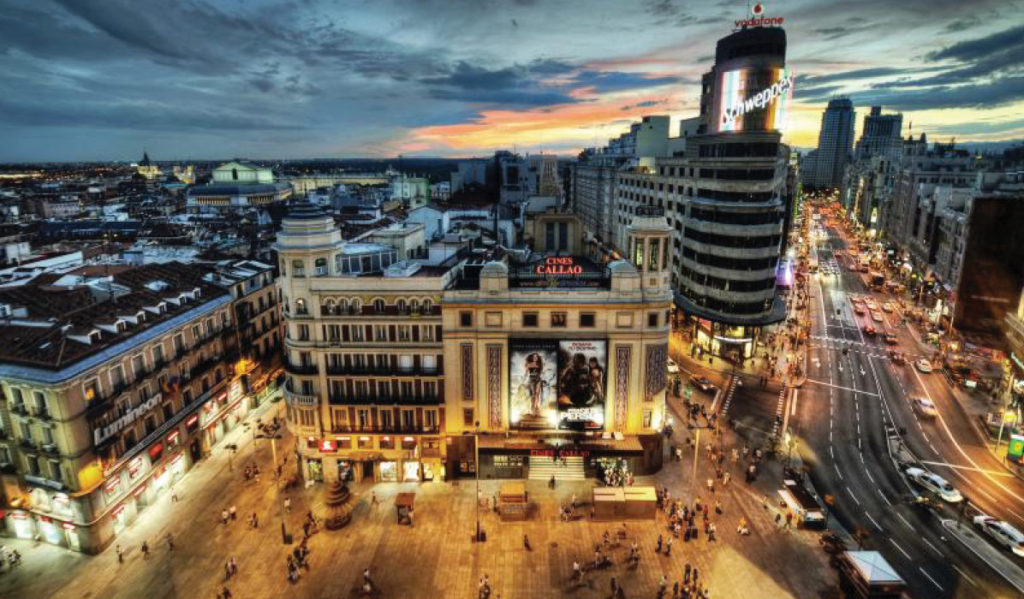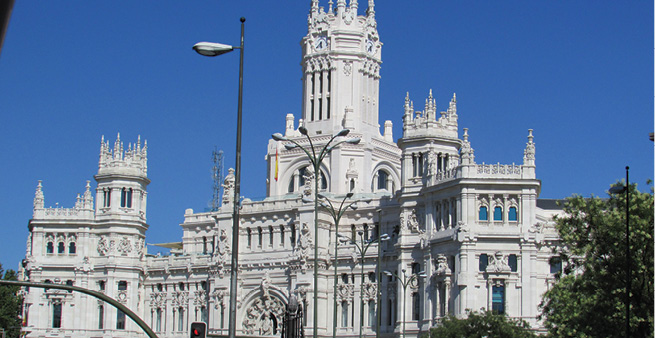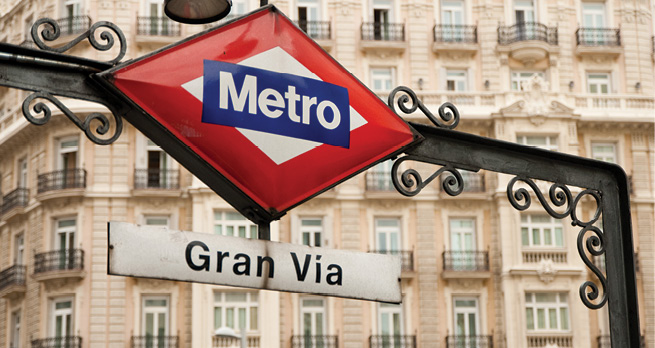Madrid • Athens • Lisbon


In part one of a three part series looking at the European economies worst hit by the financial crisis, eolas travels to Madrid to examine the cause and impact of their banking bailout, while assessing the sustainability of economic growth.
“The political classes have never been so animated, while the public have never been so calm,” remarks Emilio Lamo de Espinosa, President of the Chatham House-styled think tank Real Instituto Elcano. He sums up a recurrent theme among the broad spectrum of Spain’s economic players during conversations with eolas in late September 2016. That Spain’s political sphere is now feeling the effects of the financial crisis is evidenced by almost nine months without a central government and a potential third general election in a year (subsequently avoided due to the abstention of the Socialist Party). However, economic growth for 2016 of over 3 per cent does not reflect the political turmoil and the citizens appear confident in the stability of the country.
Joe Haslam, an Entrepreneurial Management professor, teaching at Madrid’s IE Business School believes that Spanish society has simply grown weary of austerity: “Spain has made a collective decision based on no economic facts or logic that they are sick of being in recession and have decided, by affirmation, that the recession is over, even if the fundamentals don’t back that up,” he explains. “There is no basis to the recovery, but there is a recovery.”
Others however, argue that Spain is at the beginning of a major reform, not just of its economic sectors but to its previously timid approach to globalisation and expansion beyond its comfort zone.
Causes
One of the major diagnoses of the Spanish financial crisis was a slow, if not almost non-existent, reaction to signs of trouble. Spain originally escaped the initial damage of the global financial crisis caused to the likes of the UK, the US and Germany, but major faults in its banking sector were exacerbated by the unsustainable real estate bubble. Spain’s economic difficulties stemmed largely from the basis that its economy was heavily reliant on the construction sector (17 per cent in 2007). This was a consequence of heavy investment in the real estate sector since 2002, when Spain entered the Eurozone as one of the less-developed members.
In the run up to the global crisis, Spanish savings banks (known as the cajas) had largely expanded their branches in what has been described as a “securitisation frenzy” and expanded credit through wholesale funding. The cajas, the public side of Spain’s dual banking system, largely depended on international funding and took on extra risks on their balance sheets to secure liquidity from the ECB.
José Luis Martínez Campuzano, economic analyst of the Spanish Banking Association, explains: “The Spanish banking system is a conventional retail business. This business, far from distributing structured products was, before the crisis, a model of low default business, highly solvent and efficient, with high coverage supplies. All these features allowed the system to resist well in the first stage of the international financial crisis, which focused on US banks. But, while the international financial crisis aggravated and became the Euro crisis, the excesses of the Spanish financial sector became more evident.”
Santiago Carbo-Valverde, Professor of Economics and Finance at Bangor Business School (Wales), explains that while the housing bubble affected both private and savings banks, a lack of diversity in the savings banks meant they were the worst affected. “They were not investing in other places in the world where they could have compensated some of the losses. Also, the management was weak. One could see that everybody ate a part of the cake, not just the savings banks, but they had a weaker governance. Poorer management made things worse and delayed the original crisis of 2008,” he states.
The assertion that the structure of the cajas was not suited to deal with a crisis, is echoed by Miguel Otero-Iglesias, principal investigator of the Real Instituto Elcano, he says: “Our major problem was the small savings banks, which got too big for their capacity and got too heavily involved in the real estate sector. They were not internationalised, they were not very professionalised and there was a lot of politicisation.
“There was an embeddedness between politicians, construction firms, developers and the small savings banks. Add to this that they were socially popular because of their social missions, it meant no one wanted to close them down.”

Reaction
By 2011 Spanish financial institutions had €405 billion of loans associated with the real estate sector, with €188 billion considered at risk of default. In the same year, the cajas had to write down €50 billion from their property portfolios and the Bank of Spain classified €180 billion as troubled assets. These debts, coupled with an over-reliance on international wholesale funding, which had by then mostly dried up, meant that despite originally resisting it, Spain sought a €100 billion bail-out of its banking system in 2012, after it experienced a double-dip recession and prompted by the collapse of Bankia, the country’s largest real estate lender and a creation of the nationalised merger of weaker cajas.
Many have described the power of “inaction” of the big banks and the Spanish Government as a major player in Spain’s economic downturn. Carbo-Valverde says that many economists wrote in 2008/09 about Spain’s looming problem. “The global numbers were clear. You had €350 billion in loans to developers, not mortgage loans, they were €700 billion, sitting in the bank’s portfolio,” he outlines.
“Counter cyclical provisions to be built up by the Bank of Spain was a good idea but they only built up €30 billion by 2008 and the problem was €300 billion. The Bank of Spain reacted too slowly, by first not recognising that the gradient was rising too much and secondly, because their supervision was not close or strong enough.”
While both Ireland and Spain suffered as a result of a real estate bubble and overdependence the property market, it is important to note, that unlike Ireland, Spain’s bailout and subsequent reform, was targeted solely at the banking sector and not the overall economy. According to the European Commission, Ireland’s bailout required 225 per cent of GDP, where it was only 9 per cent in the case of Spain. The EU aim for Spain was to stop the distrust of the banking sector, mostly brought about by the cajas, a minority of the overall financial sector.
Brendan Hayes and his colleague Juan Bascones, who work for ICR Institutional Investment Management, SGIIC, an investment management firm based in Madrid, point to some of the differences.
“There was a lot of denial in Spain. One of my observations was that Ireland probably reacted a bit better to non-performing loans on the banks’ balance sheets. Maybe it’s hand was forced because of what happened with Irish banks, but my impression is that Spain delayed that. The Prime Minister at the time, José Luis Rodríguez Zapatero, said that Spain had joined the “Champions’ League” of world economies. You could see that there was some denial to the extent of the underlying problem,” says Hayes, who left Ireland for Madrid 20 years ago.
Bascones adds: “Spain had a massive property crash, but not to the extent that Ireland did. In Ireland the property price haircut was close to 50 per cent in just 12 to 14 months. The same property collapse happened in Spain three years after Ireland but prices fell over five years rather than just two and the haircut was less steep at around 35 per cent.”

Sectors
Of course, Spanish financial problems, although largely magnified by the property crash, existed outside of the banking sector as well. A large part of a return to growth of the Spanish economy has been put down to the early stages of reform in those affected sectors. In order to understand how change has taken place, it’s important to understand the context of some of Spain’s key economic structures, which shaped how Spain dealt with the fall out.
Most notably was Spain’s labour market, which had a two-tier system governed by rigid labour laws. Permanent contracts, usually reserved for the large public sector, prevented wage reductions and made dismissing workers extremely costly. On the other hand, Spain had a long legacy of temporary contracts and many of these people were easily dismissed. Contributing editor to The Guardian and former Madrid Correspondent for the Economist, Giles Tremlett, explains that while the temporary contract mechanism was useful for some businesses to reduce their workforce in times of decline, the sheer scale of which this took place was detrimental to the economy .
“Unemployment has always been structurally and statistically high in Spain anyway. While these temporary contracts were good for companies who needed to downscale very quickly, it was terrible for consumer spending. Everybody got frightened, spending shrank and so you had a full on recession,” he says.
Iván Ayala, a member of the economy team of Podemos, a political party born out of the crisis, argues that it is not rigidity, but too much flexibility that influenced the unemployment crisis. “We observed that at the beginning of the crisis in 2007/08, Spain actually had its lowest unemployment rate, since it became a democracy, at around 8 per cent. However, by 2009 it was at 16 per cent. This is not a rigid labour market, it is a flexible one, with too many incentives to rely on temporary work. Temporary contracts are being exploited to the extent where we are seeing nine out of every 10 jobs created are being classed as temporary. They are being deployed by businesses as a form of protection but this is having a huge impact on Spain’s overall productivity.”
Joe Haslam believes that, as well as a dependency on the public sector for work, Spain’s ability to minimise the impact of recession was hampered by an inward-looking private sector. “In Spain, the idea of family business really rings true. Almost all businesses are family businesses and that is to do with a level of trust. People will only trust their family so the idea of setting up a business with someone you share no blood ties to is seen as an unusual thing to do.
“Spain has its big companies in the IBEX35, which are largely linked to the State, almost nothing in the middle and then a pile of very small companies. These small companies projected a fear to grow because they did not want to lose control. Whereas globally most people would recognise owning 51 per cent of a company as being in control, in Spain, it was 100 per cent. This low level of aspirational entrepreneurship has been recognised as a prohibitor in Spain attracting global investment and growing into other markets.”
Another major sector that has been pointed to as a contributor to Spain’s recession is its poor education system. Those who were left or made unemployed as a result of the crisis, did not possess a high enough level of education to re-skill. For those that were highly skilled or going through the education system, emigration became a more appealing option.
Reform
As well as reforms of the banking sector imposed upon Spain by the EU bailout, the People’s Party (PP), elected in 2012, initiated economic structural reforms, with varying degrees of success. Between 2010 to 2012, three labour market reforms were introduced and other important structural changes in all markets, including financial reform, pension reform, work reform and more flexibility in production. Despite these changes and an economic growth of 3 per cent, Spain has not yet recovered the nominal product level prior to the crisis.
Spain’s rising debt levels, have also seen a lot of pressure applied to its 17 regional governments to reign in their spending.
Marta Matute, Professor of Economics of the European Union at Syracuse University believes that while changes have been made, more still needs to be done to ensure that Spain’s economic growth is sustainable. “A lot of the current growth could be put down to reform, especially those guided by the European institutions. They highlighted that there was a need for structural reforms and I think these contributed to changing the labour market with a decrease in the degree of flexibility. This installed more trust on the system and on the labour market. The crisis helped to boost our competitiveness. Spain always had a lot of internal consumption but now our external consumption is up. Continuing with structural reforms is the key to Spanish growth. We have to reduce the barriers to trade, the barriers to entrepreneurship, while continuing to reform the education system and labour markets.”
Politics
Despite some success in initiating reforms across the Spanish economy, the PP failed to secure enough of a majority to form a Government in December 2015, a second snap election in June 2016, also proved inconclusive and brought about an impasse of almost nine months. A heavy influence on this was Spain’s 17 regional authorities, some of which witnessed a huge disparity from Spain’s main cities in terms of the impact of the crisis, and others who objected to the impacts of the reforms being pushed upon them. The PP finally formed a government in October following an abstention from the Socialist Party, who split internally over plans to form a coalition with the PP. However, many predict that the lengthy absence of government decision-making, could have produce a delayed negative impact on economic growth going forward.
Another influence was a change in the dynamic of Spain’s political system. Traditionally Spain’s political make up of two large blocs, left and right, while the middle was occupied by the smaller regionalist, nationalist or separatist parties. The rise, out of the economic crisis, of Podemos, a political party made up of academics and political scientists, has changed the makeup of Spanish politics.
Unlike other populist parties that have appeared across Europe, fuelled by economic unrest in the country, Podemos offered a credible alternative to the Government. Borne-out of the Indignados street demonstrations, their clear strategic direction saw them do extremely well in the regional elections and take 79 of the 350 seats available nationally.
One member of their economic team, Iván Ayala, explains: “Since 2007 the management of the Eurozone has been harsher and has become more strict on the fiscal framework, we say an opportunity to implement new economic policies for the betterment of Spain and I think that’s what drove the discontent of the Spanish people into the formation of a political party.
“Our aggression put pressure on the system and forced the established parties to reconfigure and I think in some cases they adopted a lot of what we were advocating. Things like seeking a renegotiation of the deficit, which has now actually taken place. We knew we were challenging the system and so we knew economically we had to be strong and robust. We were the first party to produce a model of an economic vision.”

Brexit
Even when challenging the fiscal restraints imposed by Europe, Podemos reflect a general lack of Euroscepticism within Spain. The country benefited hugely from the joining the Eurozone after the fall of Franco’s dictatorship in 1975. Speaking about the evolution of the country Miguel Otero-Iglesias, says: “Some processes are natural. You can steer change from the top down but in the 1980s Spain was still a very underdeveloped place. We are still a very young democracy but we have survived the biggest crisis that democracy has faced to date and there are positive signs on the other side of it. We still have progress to make in many different ways but I believe we are more international today than we were a decade ago and we will be more so in the next decade.”
As well as the political impasse, most recognise that the Brexit fallout is likely to impact on the global economy and invariably, the Spanish economy. Giles Tremlett, said that the impact was largely “anecdotal” for the public but that uncertainty was likely to damage the European economy in the long-term.
Conclusion
Overall, three broad themes seem to emerge which may point to reasons behind Spain’s economic growth in recent times. They consist of: firstly, a catch-up of the economy on the dramatic fall in the crisis; secondly, the early stages of reform to some of Spain’s central economy pillars; and thirdly, a broad consensus in Spain that the country will benefit from globalisation. However, whether continual economic growth is sustainable will rely on both regional and national reform, and favourable movements of the international market.
Jose Luis Martínez Campuzano sums this up when he states: “Although important structural reforms have been carried out in recent years, the unemployment rate remains at levels of 20 per cent. Therefore, the challenge of Spanish authorities is to create jobs. In my opinion, many of the risks for the Spanish economy come from abroad. So it is important that the Spanish authorities continue to take action to increase potential growth and thus protect economic recovery for international uncertainties.”
Miguel Otero-Iglesias, describes the mood in Spain as “generally optimistic”. “This country has shown it can cope with trouble and tension, while showing a desire to progress and modernise. Spain’s next generation is presenting a lot of strength and movements such as that of Podemos, show that Spain is able to channel its anger and frustration without drastic measures. Despite the crisis being heavy in Spain, there are no militant right wing parties or overt aggression against ethnic groups, even though Spain was the second largest absorber of immigrants between 1999-2007, other than the US.
“Spain, with its empire and with its civil war has experienced highs and lows but we have become adept at managing decline as a result.”





